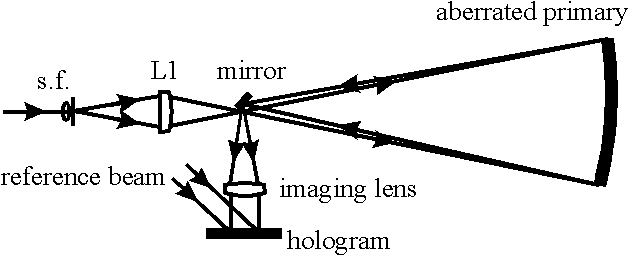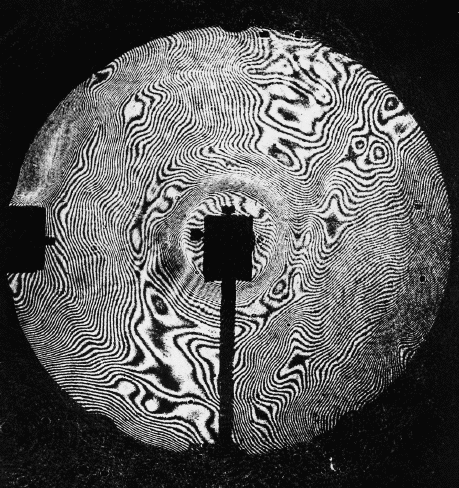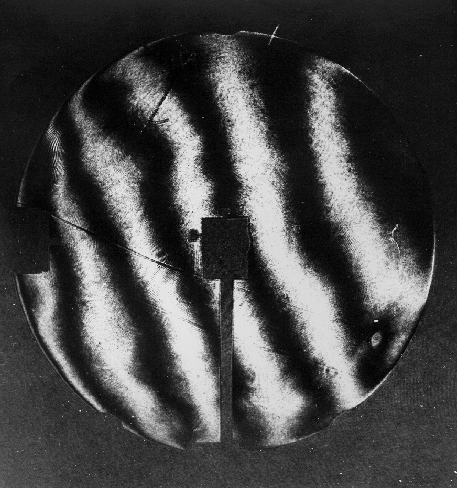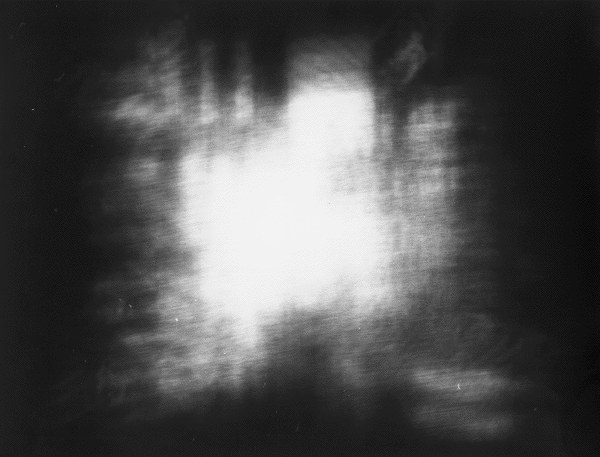
SHAFT
Space-based Holographic Air Force Telescope (SHAFT) is a research project being pursued by the LORC group. The concept has long term aims of developing a feasible design for a large diameter (~20m) holographically corrected telescope for deployment in space. The concept involves placing a low-quality, inexpensive reflector (perhaps an inflatable structure) in space and recording a hologram, in situ, of the surface. This hologram can then be used to correct for the aberrative effect of the mirror on images of distant objects.
The concept of using holography to correct for the aberrations present in a telescope primary was first put forward by Denisyuk (1971) and later by Munch et al. (1989,90) based on earlier work in the holographic correction of images in distorting optical systems. These works demonstrated the image correction of various reflector and refractor designs with both narrow band and broadband illumination.
Our work is based on studies by Andersen (1996,97) which concentrated on the problem of reducing the overall length of the telescope to minimise construction costs and with a long-term view to the construction of a space-based telescope. The results of some of this research are shown below.
Current Research
The basic method of correction is
shown in the diagrams below. The recording of the hologram takes place
at the centre of curvature of the spherical primary, with the reconstruction
at the focal plane.
Recording
A spatial filter illuminates
a lens which focuses light to the centre of curvature of the spherical
primary. The reflected light is collimated and an image hologram of the
mirror is formed on film with a collimated reference beam.

Reconstruction
Collimated light (or light from a star), focused by the primary
mirror is collimated by a secondary lens which images the mirror onto the
processed hologram to the same magnification as on recording. This beam
will reconstruct a diffraction limited beam at the hologram.
In the largest demonstration of the holographic correction of an
aberrated reflector to date, a 0.5m diameter, F/6 spherical mirror with
over 200 waves surface deformation was corrected to diffraction limited
operation. The results of both interferometric and image analyses are shown
below.

Before Correction
This interferogram represents a contour map of the surface of the
primary mirror before correction. The mirror was constructed by slumping
a flat glass sheet over a concave mould in an oven and then aluminising
the top surface. This interferogram shows the presence of many localised
surface defects as well as a large amount of astigmatism

After Correction
The final corrected image of the mirror shows fringes which are straight to 1/4 of a wavelength of the light used (HeNe @ 632.8nm). This is a demonstration of the correction of both the random surface distortions as well as spherical aberration which would normally be present when focussing plane wave with a spherical mirror.

After Correction
This shows the corrected image of the same resolution test chart,
which has been magnified to show all of the detail. The minimum resolvable
bars in this image are separated by about 3 microns (Group 7, Element 3).
Remember, the "before" images shows Groups 2 & 3 (though not very clearly!).
